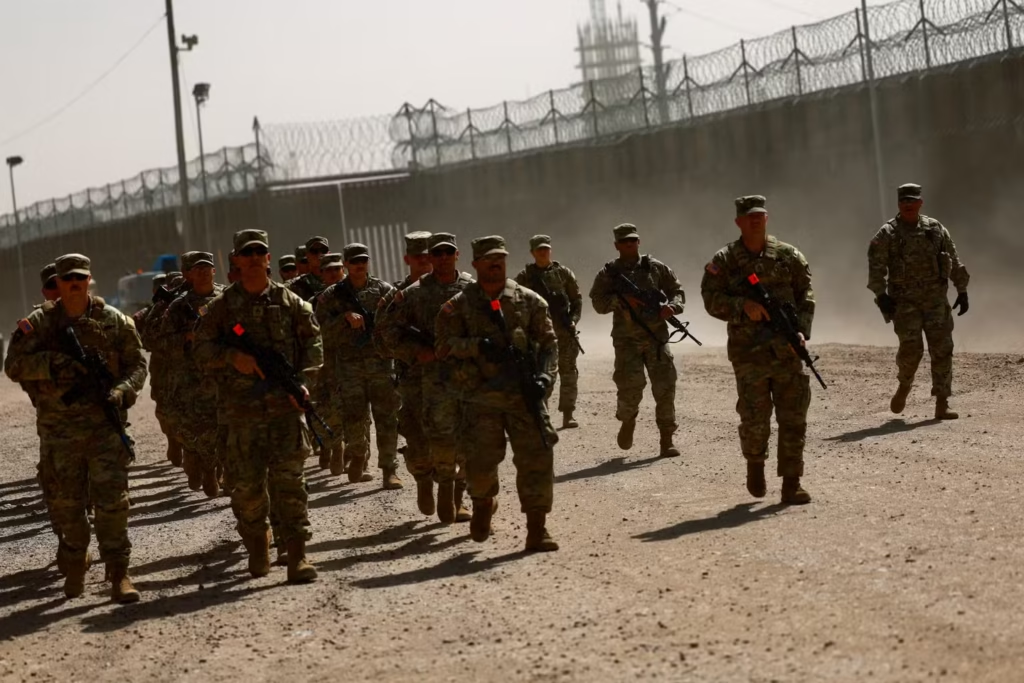The Border Crisis USA 2025 is one of the most pressing issues that the United States will face in the coming years. With an increase in migration flows, policy debates, and heightened concerns over national security, this crisis could have significant long-term effects on the U.S. and its immigration system. In this article, we will explore the current state of the border crisis, what the future may hold, and the policies that will likely shape the United States’ response in 2025.
The State of the Border Crisis: A Brief Overview
For the past few years, the U.S.-Mexico border has been at the center of an intense political debate. The number of individuals attempting to cross the southern border has surged, fueled by a combination of factors such as poverty, violence, and economic instability in Central America, as well as changing U.S. immigration policies.
In 2025, the situation is expected to continue to evolve, with more people seeking asylum in the U.S. and increasing challenges to border enforcement. The U.S. Customs and Border Protection (CBP) faces rising numbers of border crossings, and local governments along the southern border are struggling to manage the crisis while dealing with limited resources.
Key Factors Driving the Border Crisis USA 2025

Several factors are contributing to the Border Crisis USA 2025, and understanding them is key to grasping the scope of the challenge the country faces. These include:
1. Economic Instability in Central America
Many of the migrants arriving at the U.S. border come from Central American countries like Honduras, El Salvador, and Guatemala. Economic hardships, coupled with violence from criminal organizations and weak government structures, push people to seek better opportunities in the U.S.
While U.S. foreign aid efforts have attempted to address some of these root causes, the crisis in these regions persists. In 2025, migration patterns are unlikely to change unless significant economic and social improvements occur in these countries.
2. Rising Violence and Political Instability
Gang violence, drug trafficking, and political instability have also played a significant role in driving migration from Central America. Many people fleeing these regions are seeking refuge from life-threatening conditions. In 2025, with several countries in the region still struggling with violence, migration pressures will remain high.
3. Changes in U.S. Immigration Policy

U.S. immigration policies are constantly evolving. The Biden administration made significant changes to border enforcement in an attempt to create a more humane system for handling asylum seekers. However, these changes have led to increased migration as individuals take advantage of more lenient policies.
By 2025, immigration policies could shift again depending on the political landscape. There will likely be continued debates over border security, asylum procedures, and the legal status of undocumented migrants already in the country.
4. The Impact of Climate Change
Climate change is increasingly being recognized as a driver of migration. As natural disasters, droughts, and food insecurity worsen in Central America, more individuals may be forced to migrate to the U.S. to survive. The Border Crisis USA 2025 could thus be exacerbated by environmental factors as well as political and economic instability.
The Human Cost of the Border Crisis USA 2025
The human toll of the Border Crisis USA 2025 is staggering. Thousands of individuals, including children, make the perilous journey through dangerous terrain to reach the U.S. Many migrants face exploitation by human traffickers, abuse, and even death during their journey.
In addition, overcrowded detention facilities, stretched resources, and inadequate medical care have led to poor living conditions for migrants once they arrive at the border. These conditions, combined with a growing backlog in asylum claims and limited housing options, have raised concerns about the humanitarian impact of the crisis.
Key Stats: The Migration Surge
In recent years, U.S. border enforcement has reported a consistent increase in migration flows. According to U.S. Customs and Border Protection data, there were over 2 million encounters at the southern border in 2023, with many individuals attempting to cross multiple times.
By 2025, it is expected that migration will continue to rise, potentially setting new records as more individuals are drawn to the U.S. due to ongoing crises in their home countries. With the surge in migration, the need for a coordinated federal response will be crucial.
Proposed Solutions to the Border Crisis USA 2025
As the Border Crisis USA 2025 intensifies, several solutions are being proposed by lawmakers and immigration experts. These solutions are focused on both addressing the root causes of migration and reforming the U.S. immigration system to better handle the flow of people.
1. Addressing the Root Causes of Migration
Many experts argue that the U.S. must invest more in the countries that are producing large numbers of migrants. Economic development, improved governance, and support for local communities in Central America are all essential steps to reduce the push factors driving migration. In 2025, expect increased calls for U.S. foreign aid aimed at stabilizing these regions.
2. Immigration Reform
One of the most debated solutions to the Border Crisis USA 2025 is comprehensive immigration reform. This could include pathways to citizenship for undocumented migrants, changes to asylum processing, and more resources for U.S. immigration courts to handle cases more efficiently.
The Biden administration has made some strides in this direction, but progress has been slow due to partisan gridlock. In 2025, the future of immigration reform will likely depend on the political composition of Congress and the priorities of the president in office.
3. Enhanced Border Security
Some lawmakers argue that securing the border with increased surveillance and border patrol staffing is necessary to control the flow of migrants. This has been a key point of contention in the debate over how to handle the crisis. By 2025, it’s possible that we will see more emphasis on technology-driven solutions, such as drones and sensors, to monitor border crossings.
4. Streamlining Asylum Procedures
Another proposed solution is reforming the asylum process itself. Critics of the current system argue that it is too slow and cumbersome, leading to a backlog of cases that can take years to resolve. Streamlining the process by increasing the number of judges, providing legal assistance to asylum seekers, and enhancing the efficiency of asylum hearings could help reduce delays and alleviate some of the burdens at the border.
5. More Support for Border Communities
Local governments and communities along the southern border are under tremendous strain. There is a growing need for federal resources to support these communities in handling the influx of migrants. Providing additional funding for local shelters, healthcare, and law enforcement will be a key part of managing the Border Crisis USA 2025.
Conclusion: What’s Next for the Border Crisis USA 2025?
The Border Crisis USA 2025 is not just a political issue—it’s a humanitarian challenge that will require both short-term solutions and long-term strategies. While there is no simple fix, it is clear that the U.S. must address the root causes of migration, reform its immigration system, and invest in border communities to create a more sustainable solution.
As we move closer to 2025, it’s likely that immigration will remain a central topic of political debate, especially as migration pressures continue to mount. The actions taken by Congress, the administration, and local communities will be critical in shaping the outcome of the Border Crisis USA 2025.
Whether through legislative reform, increased investment in Central America, or new border security measures, the coming years will be crucial in determining the future of U.S. immigration policy and the impact of the border crisis on the nation.
Also read – The Future of Women’s Soccer in the U.S.: What’s Next?






